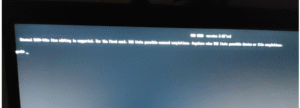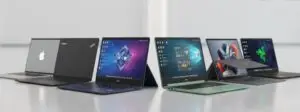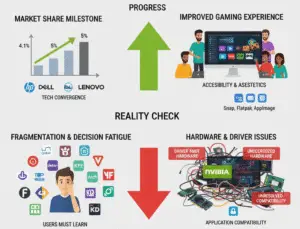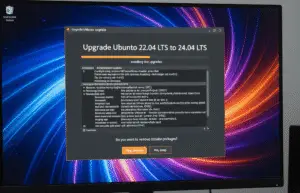
Extended Reality (XR) in 2025: The Future of Digital Experiences

Introduction: Blending Real and Digital Worlds
Imagine putting on lightweight glasses and seeing your work documents floating in mid-air, then switching to a virtual beach for your lunch break, all without leaving your desk. This is the promise of Extended Reality (XR) – a technology that’s set to transform how we work, learn, and play by 2025.
XR is an umbrella term that includes:
-
Virtual Reality (VR) – Fully digital environments
-
Augmented Reality (AR) – Digital overlays on the real world
-
Mixed Reality (MR) – Digital objects that interact with real space
Let’s explore how XR will change our daily lives, with simple explanations and real-world examples anyone can understand.
How XR Works (The Simple Version)
The Technology Behind the Magic
-
Sensors – Track your movements and surroundings
-
Displays – Show digital content (screens or projections)
-
Processors – Power the experience (in headsets or phones)
-
Software – Creates the digital elements
Example: When you use a VR headset, it tracks your head movements to adjust what you see, making the virtual world feel real.
XR in 2025: 7 Life-Changing Applications
1. Workplace Revolution
-
Virtual offices with digital whiteboards
-
Remote collaboration as if colleagues are in the room
-
Example: Microsoft Mesh lets workers meet as avatars in shared virtual spaces
2. Next-Level Education
-
Virtual field trips to ancient Rome or outer space
-
Hands-on training for dangerous jobs
-
Example: Medical students practicing surgeries in VR before touching real patients
3. Retail & Shopping
-
Virtual try-ons for clothes and makeup
-
3D product previews in your living room
-
Example: Warby Parker’s AR app lets you try glasses virtually
4. Healthcare Breakthroughs
-
AR-assisted surgeries with vital data overlays
-
VR therapy for pain management and PTSD
-
Example: Johns Hopkins uses AR during spinal surgeries
5. Entertainment & Social
-
Immersive concerts where you’re on stage
-
Virtual travel to distant locations
-
Example: Meta’s Horizon Worlds for social VR hangouts
6. Design & Engineering
-
3D prototypes you can walk around
-
AR instructions for complex assembly
-
Example: Ford uses VR to design cars before building physical models
7. Smart Navigation
-
AR directions painted on real streets
-
Indoor maps in airports and malls
-
Example: Google Maps Live View shows arrows on your phone’s camera view
The Technology Powering XR in 2025
1. Lighter, Better Headsets
-
Glasses-like devices replacing bulky headsets
-
Example: Apple Vision Pro showing the future of MR headsets
2. Haptic Feedback
-
Gloves and suits that let you “feel” virtual objects
-
Example: bHaptics suit for full-body VR sensations
3. Eye & Face Tracking
-
Avatars that mirror your real expressions
-
Example: Varjo headsets with ultra-precise eye tracking
4. 5G & Cloud XR
-
Powerful experiences streamed to lightweight devices
-
Example: NVIDIA CloudXR for high-end VR on mobile headsets
Challenges XR Needs to Overcome
-
Motion Sickness – Some users feel dizzy in VR
-
Battery Life – Wireless devices need more power
-
Social Acceptance – Wearing headsets in public
-
Content Creation – Need for more XR-optimized material
XR vs. Traditional Screens: Why It Matters
| Feature | Traditional Screens | XR Experiences |
|---|---|---|
| Immersion | Flat, detached | 3D, all-around |
| Interaction | Mouse/touch | Natural gestures |
| Space Needs | Requires physical screens | Uses any environment |
| Scale | Limited by screen size | Life-size or larger |
Example: Watching a concert video vs. feeling like you’re actually in the front row through VR.
The Future: What to Expect by 2025
-
Mainstream XR glasses replacing some smartphone uses
-
“Phygital” experiences blending physical and digital
-
More enterprise adoption in training and design
-
New XR-first jobs we can’t imagine yet
Example: Architects might walk clients through virtual buildings that don’t exist yet, making changes in real-time.
Conclusion: The Blended Reality Future
By 2025, Extended Reality will begin to erase the line between our physical and digital worlds. While it won’t completely replace traditional screens, XR will create new ways to interact with information and each other that feel more natural and immersive.
The most successful applications will be those that solve real problems while feeling as comfortable as using your smartphone does today. As the technology becomes lighter, more affordable, and more intuitive, we may reach a point where we forget we’re using XR at all – it will just feel like part of how we experience the world.




